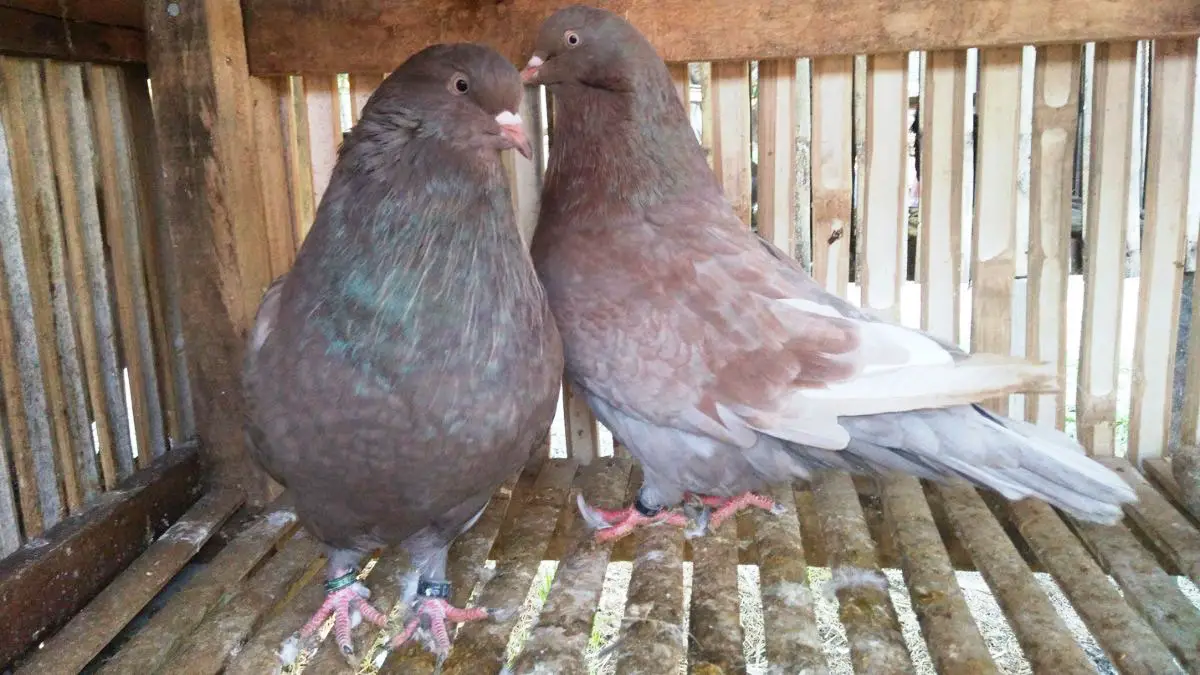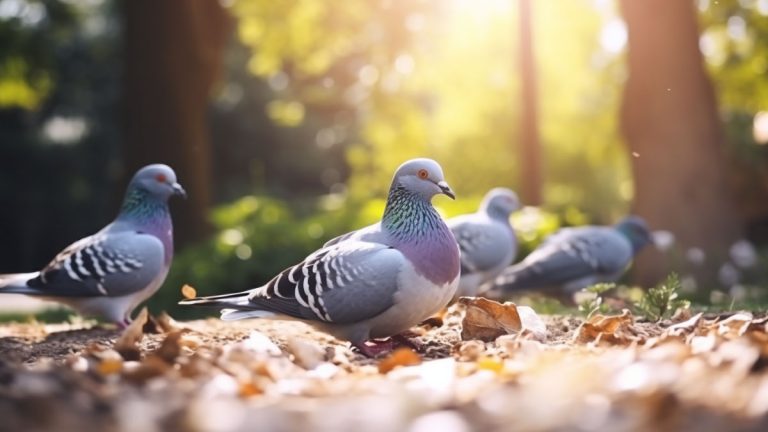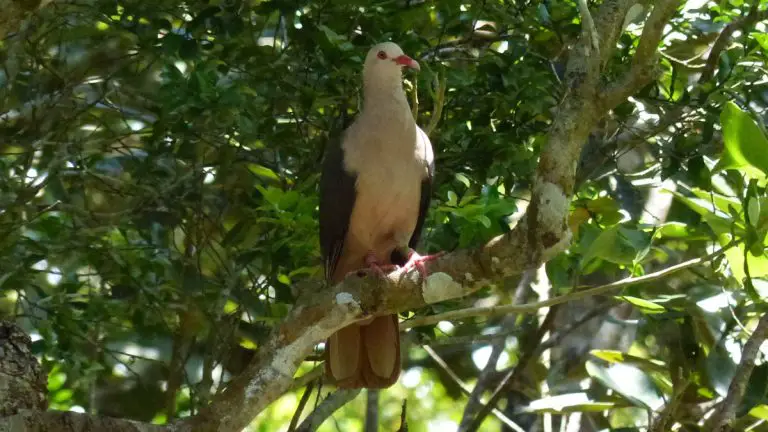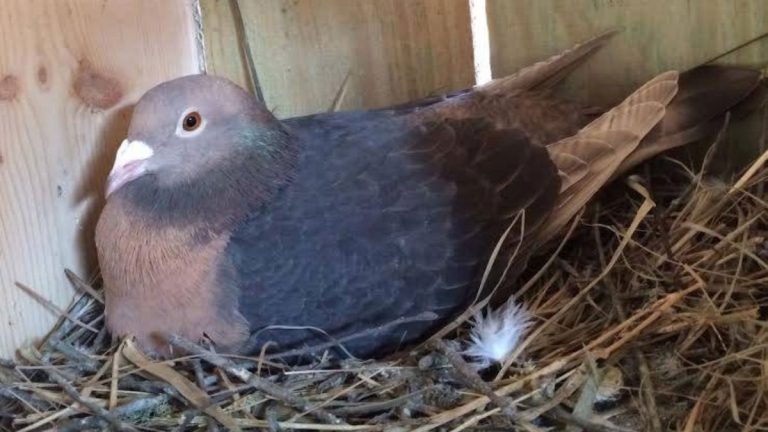Giant Runt Pigeon: Origin, Appearance, Behavior, Care, And More
When you hear the name giant runt pigeon, probably the first thing that comes to your mind is a BIG pigeon. And you’re not far from the truth.
This breed is one of the largest domesticated pigeons available—with a mature bird weighing up to 2½ pounds. Its large body mass perfectly suits it for squab production.
In this article, you’ll discover more info about the bird such as its true origin and history, physical characteristics, how big giant runts get, behavioral traits, and how to care for it as a pet.
Giant Runt Quick Facts:
| Scientific name | Columba livia domestica |
| Other names | American Giant Runt, Roman Pigeons |
| Breed name | Giant Runt |
| Origin | Rome |
| Breed purpose | Utility, exhibition, pets |
| Size | Large |
| Weight | 2½ pounds |
| Flying ability | Average |
| Cost | $100 to $300 |
| Lifespan | 5 to 10 years |
Origin and history
This bird is one of the oldest breeds of domesticated pigeons. Feral birds of similar types are even described as far back as the Roman days.
Plinty the Elder’s reference to a magnificent breed of pigeon in Campagna in his book, The Natural History, around the 1st century is believed he was talking about this breed. (Source).
An image of this bird is also included in wall carvings of St Peter’s Basilica in Rome, which shows how common the giant runt was in the region.
It gets the name runt due to its origin which is traced to Spain and France. The name runt in these regions simply means plain or common.
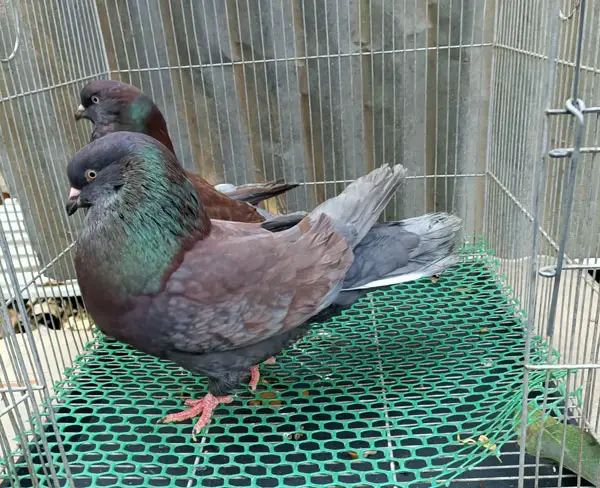
The bird was developed by crossing runt pigeons with a variety of other breeds.
However, it’s not clear when this breed of pigeon first arrived in the USA. But there’s evidence supporting the bird appeared in a Philadelphia exhibition in 1873 as explained by Wendel Levi, the author of The Pigeon book.
The American Giant runt was developed following the American breeders’ quest for a more compact bird variety with greater body mass.
This explains why the overall impression of the giant runt is a large and broad bird that denotes boldness and strength.
In other words, the breeders were aiming for a bird that was plumper for squab production.
Pigeon meat isn’t popular today, however, although some breeders still produce this bird for utility purposes.
Today, the birds are mainly kept for exhibition purposes or as pets. You can check out this Giant Runt Club of America FB group and interact with giant runt owners from various parts of USA.
Appearance
True to its name, the giant runt is one of the largest breeds of domesticated pigeons available. The average weight of a mature bird is about 2 ½ pounds while some exceptional birds can become even heavier—up to 3 ½ pounds.

Here is a detailed head-to-toe description of the giant runt pigeon:
- Head: Large and bold. The skull top is oval instead of flat or rounded as in other breeds. The head back appears well developed and gives the bird a long head.
- Beak: Fairly thick and broad. Black in color, with bleu hints.
- Eyes: Healthy eyes appear bright and clear. As for the coloration, the eyes are pearl in all varieties except white which has bull-colored eyes.
- Neck: Medium length, broad, and full as you move towards the gullet. Neck feathers are adequately full for a dense and proud display.
- Back: Extra-long, with broad shoulders appearing straight when you view them from the side. Wing feathers are long and thick.
- Wings: Moderate length and width proportional to the bird’s size. Folded close to the pigeon body and tend to wrap over rump during flight.
- Tail: Wedge-shaped and around the same width as the bird’s body. Follows the back sweep and doesn’t sweep the floor as the pigeon walks.
- Coloration: While the original breed was fairly plain in color, the modern varieties come in a wide range of colors including black, blue, silver, dun, yellow, red, white, and grizzle.
Behavior
Generally, giant runts don’t like being handled and petted. They enjoy close interactions with humans, but they’ll appreciate it if you keep some distance.
However, the level of friendliness can greatly vary between individuals. Some birds will be more receptive to handling than others.
That said, interacting with your runt pigeons from a young is a good way to tame them and make them more comfortable with your handling. Hand-raised pigeons are usually friendlier as they don’t fear you a bit.
Here’s a video showing a tame, cute, and fluffy giant runt enjoying its owner’s company:
Video:
These birds are generally calm and not aggressive towards humans and other pigeons. However, they may become aggressive if you try putting a hand in their nesting boxes.
Also, giant runts aren’t good flyers. But they can fly over shorter distances inside their aviary, say from the ground to high up on a perch.
Diet
A healthy balanced diet for a giant run includes a mix of seeds and grains. Examples include wheat, corn, barley, corn, etc.
Or you can simply get your birds commercial pellets that provide them with all the key nutrients.
Giving your bird fresh fruits and vegetables can also help supplement its diet. Ensure the pigeons have a clean and fresh source of water every day.
Giant runts as pets
The birds also make great pets due to their calm and gentle temperament and friendly nature. They’re also lively birds to watch and listen to all day.
However, it’s important to learn how to take good care of them to keep them happy and healthy.
One way to take good care of these birds is by providing them with a spacious coop or aviary due to their large size. This will ensure they have plenty of room to move around and stretch their bodies.

You should also ensure the housing is safe and secure from predators and weatherproofed to keep away draft and harsh elements.
You’ll also need to provide the pigeons with a healthy and nutritious diet as described in the previous section.
We also advise you to regularly invite an experienced avian vet to check your birds so that they stay healthy.
Above all, encourage the birds to exercise by flying and moving around in their aviary. This will help keep them healthy and prevent obesity and other health problems.
Breeding giant runt pigeon
Breeding of giant runt pigeons isn’t complicated. However, you should be careful about the mating pair you choose to ensure you achieve offspring with desirable traits such as color, size, and shape.
Provide the pair with a clean and spacious aviary for successful breeding. Also, ensure the bird has access to a nutritious diet in addition to clean and fresh water every day.
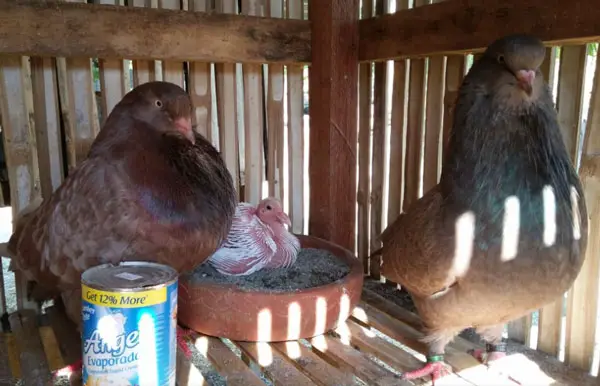
The breeding process usually takes place around the months of spring and summer and the incubation period lasts for around 18 days.
Once the chicks hatch, their parents will take care of them for weeks.
However, we also advise you to closely monitor them and take good care of them to increase their chances of survival and overall well-being.
Giant runt price
The average price of a giant runt pigeon is around $100 to $300 (sometimes the price can be more).
Some of the factors that influence the price of these birds include age, gender, breed quality, etc.
If there are fewer breeders of this beautiful bird in your region that can’t meet its high demand, then you may also be forced to spend more.
Some breeders will also charge exceptionally high prices for exceptional giant runt specimens.
Overall, you can increase your chances of finding high-quality and healthy birds by taking your time to find a reputable breeder.
Lifespan
Giant runt pigeons can live for around 5 to 10 years, and some can live for even longer with proper care. The key to long life in your pigeons is taking good care of them.
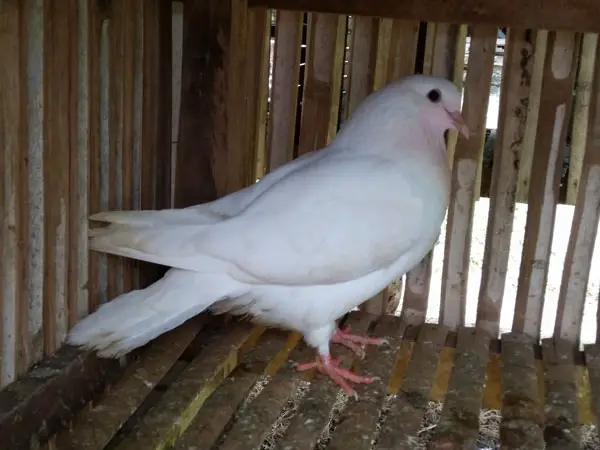
Some helpful tips to help improve your runt’s lifespan include providing it with suitable living conditions, a balanced diet, and encouraging regular exercising.
Regular vet checkups can also help keep the birds free of various pigeon health problems.
FAQs:
The giant runt is a large bird with an average size of around 1 to 1.2kgs with some exceptional birds growing heavier, between 1.3 and 1.4kgs.
Giant runt pigeons can fly but their big size stops them from being good flyers. However, they can well over short distances. Here’s a short clip of the largest pigeon breed taking flight
Video:
Final Verdict
Giant runts are one of the oldest and largest breeds of domesticated pigeons known today, going as far back as the times of the Roman empire. Due to their large size, these birds were initially used for meat production. However, today the birds are now kept for exhibition or as pets. The birds are easy to take care of and generally friendly and non-aggressive towards other pigeons. Taking good care of your giant runts by providing them, with suitable living conditions, a proper diet, and regular vet care will help keep them happy and healthy and extend their lifespan.
